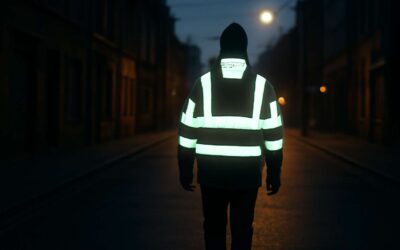
High visibility clothing plays a vital role in worker safety. These garments are essential for workers in fields such as construction, maintenance and utility. Workers in the transportation and emergency services also use these high visibility garments. Some states require workers to wear reflective clothing.
The American National Standards Institute (ANSI) has created a standard for high visibility apparel. Specifically, the institute defines four classes of high visibility garments based on activities and settings in which they are intended to be used. Each class has different performance requirements. They include physical properties, minimum areas of retroreflective material, color, and recommended configuration of materials.
While high visibility clothing provides increased visibility and protection from the elements, it should only be worn in a climate that will not negatively affect its performance. For example, workers who work in areas that will be exposed to extreme temperatures may want to opt for more breathable, lightweight jackets. This is especially true for workers who spend many hours working outdoors.
High visibility clothing can be purchased in a variety of products, including vests, jackets, and pants. The fabrics that are used in these garments provide a combination of reflective and fluorescent materials, which help ensure that they are visible to traffic operators at any time.
The Federal Highway Administration (FHWA) has established guidelines that reference ANSI/ISEA regulations. These guidelines have been incorporated into the FHWA Manual on Uniform Traffic Control Devices. Although the guidelines were initially designed for highway workers, they have been expanded to apply to all workers, including maintenance personnel, survey workers, flaggers, and emergency responders.
In addition to the Federal Highway Administration, the Occupational Safety and Health Administration (OSHA) also requires workers to wear high visibility garments. OSHA enforces these requirements through inspectors. However, it is important to note that some workers, such as police officers, are not required to wear high visibility clothing in confrontational situations.
Aside from workers on roadways, other workers such as cyclists, hunters, and first responders can benefit from increased visibility. Depending on the job, a worker may need to upgrade from Class 2 to Class 3. Public safety workers, such as police officers, must wear Class 3 garments, while construction and maintenance workers should choose Class 2.
In the United States, the Federal Highway Worker Visibility Rule was the first step in creating a comprehensive worker high visibility regulation. It applies to all public access roadways, and it is enforceable by OSHA inspectors. To comply with this requirement, construction, maintenance, survey, towing, and emergency workers should wear high visibility clothing.
If a worker needs to purchase a new outfit for his or her job, it is important to make sure that the new piece of equipment will meet the specifications of the ANSI/ISEA standards. This means that the item of clothing must be marked with the ANSI/ISEA notation. Also, if a worker’s HVSA is not a product of the ANSI/ISEA certification program, it might not be in compliance with OSHA regulations.


0 Comments